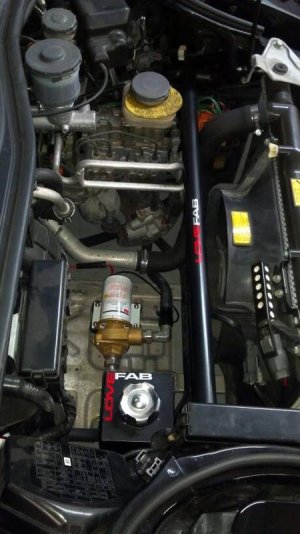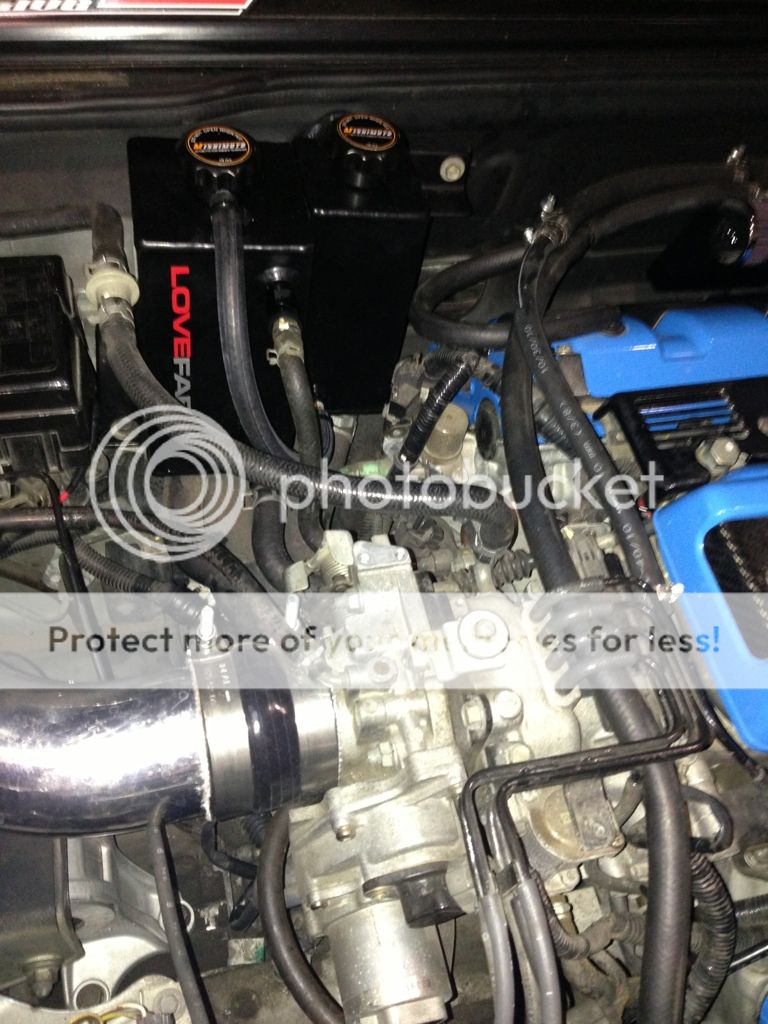This is a:
[x] Direct vendor group buy
Minimum Number of Units: 5 Complete sets to lock-in special pricing.
Maximum Number of Units: Unlimited
Closing Date: April 1st, 2013
Product Will Ship: [x] Product will ship in order of completion, in the order of payments received.
Payment Procedure: [x] Payment in full upon signing up
Payment Methods Accepted: Visa, MC, PayPal, Check/MO
Estimated Delivery Time / Date: 1-2 weeks for quantities above 20.
Product Pricing: See below.
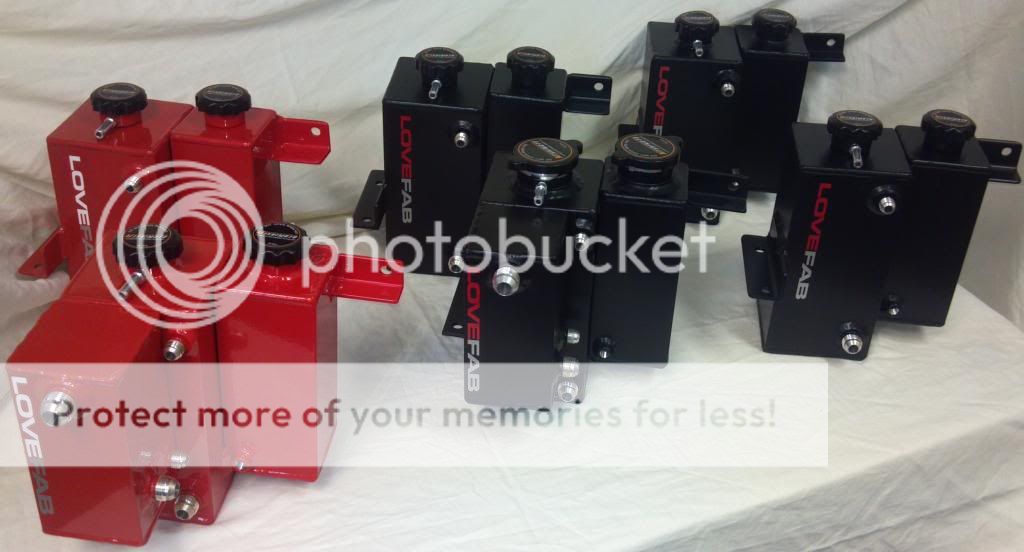
Have you ever been to the track with your NSX, had it overheat, or even just warm up past optimal operating temperature? Have you also experienced the absolute mess of coolant spraying out of the factory swirl tank, usually combined with the horror of slippery coolant coating your rear tires in the middle of a high-G, high-speed corner? Chances are, if you’ve tracked your NSX, you have.
We have transformed a time-tested product into one neat package; the Twin Chamber Coolant Tank. We’ve used this design principle for seven years, including being proven on the 754WHP Pikes Peak NSX running 24psi of boost at 14,115FT, and have had zero messes since! In addition to keeping the coolant INSIDE of the coolant system, these tanks are extremely sturdy. Each tank is built from .125” wall aluminum square stock, with .125” thick end caps, which are meticulously TIG welded to form a sealed tank. The tanks are incredibly sturdy, because there are only two welds per tank. The welds themselves are in a relatively low stress zone, which prevents “flexing” of the weld, which has led to the demise of many aluminum tanks in the past. We are so confident of our tanks that we are offering a Lifetime Replacement Warranty against failure.
The NSX engine bay is fairly cramped as it is. The vast majority of our customers use some form of forced induction, and benefit from a catch can. Instead of trying to find a place for a catch can, or shoehorning a catch can directly above the front header (which is a fire hazard!), we have implemented a catch can into our Twin Chamber coolant tank. The installation takes just minutes, and the result is a very clean and natural looking presence within the engine bay. The catch can features a -10AN bung that can be capped off and used for a drain, or returned back to the oil pan if you would prefer not to hassle with draining catch cans.
Finally, we hate fussing with hoses and hose clamps. We decided to revolutionize the coolant tank market by making AN fittings standard on all of our tanks. The pushlock fittings included with each tank(and catch can) are a one-time-installation, with no clamps required. Maintenance becomes a breeze when you don’t have to stretch, pry, and more often than not, tear the coolant hoses off of their connections. Simply loosen the AN fitting, and twist it off with one hand.
We are offering these tanks to NSXPrimers in two colors, in two configurations.
Twin Chamber Coolant Tank in Red or Black: $349.99

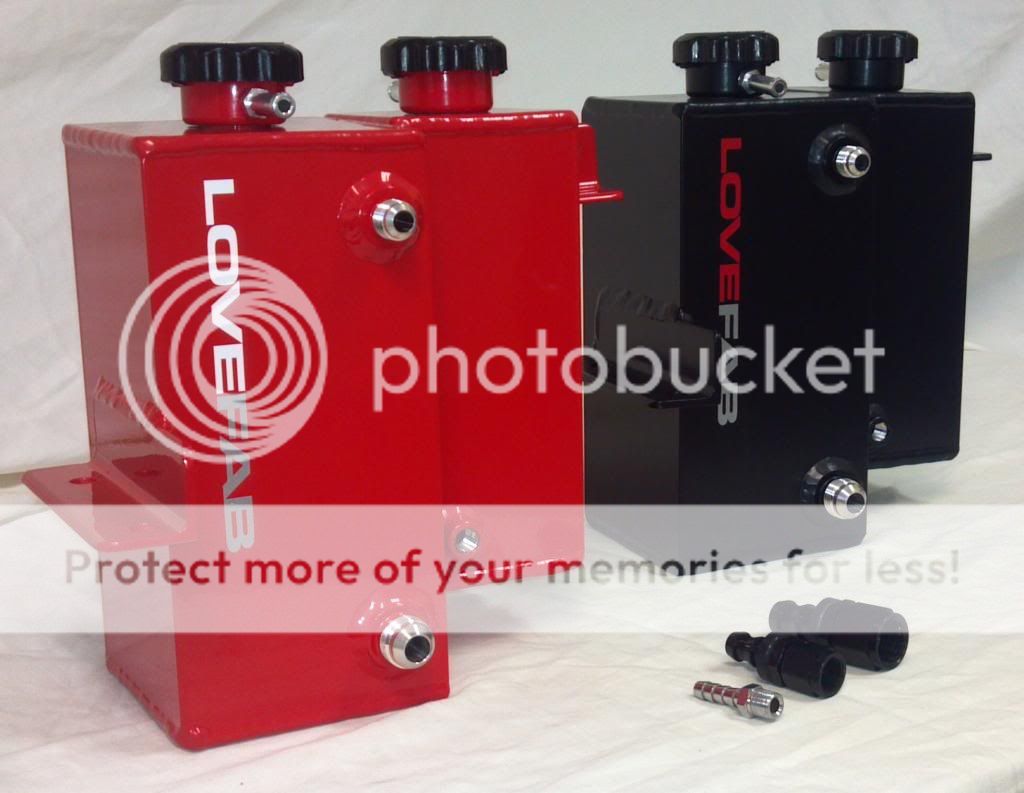
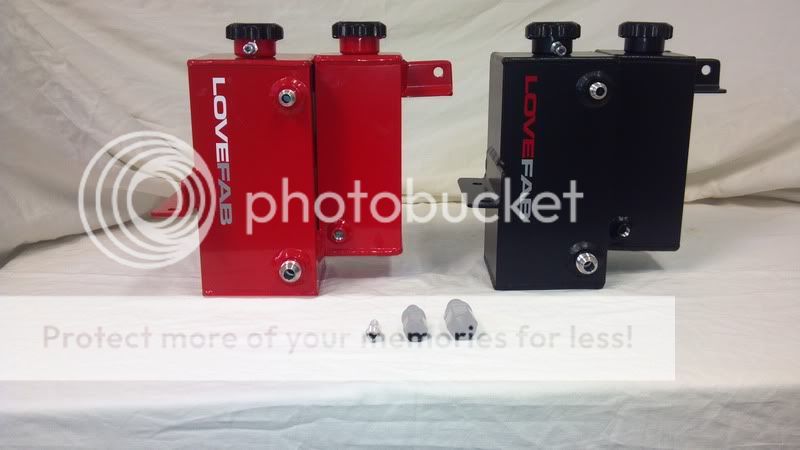
Comes with:
(2) 19psi Mishimoto Radiator Caps
(1)1/8” pushlock fitting
(1)-6AN pushlock fitting
(1)-8AN pushlock fitting
(1) coolant hose
Twin Chamber Coolant tank with integrated Catch Can: $549.99
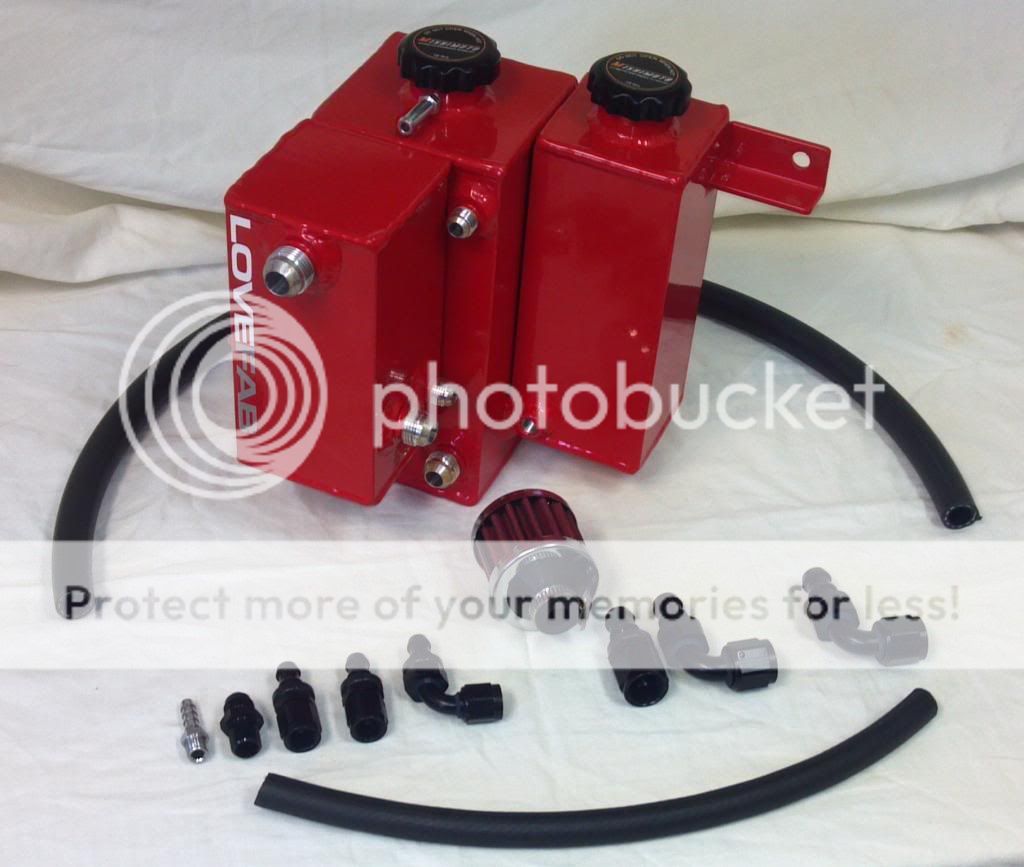
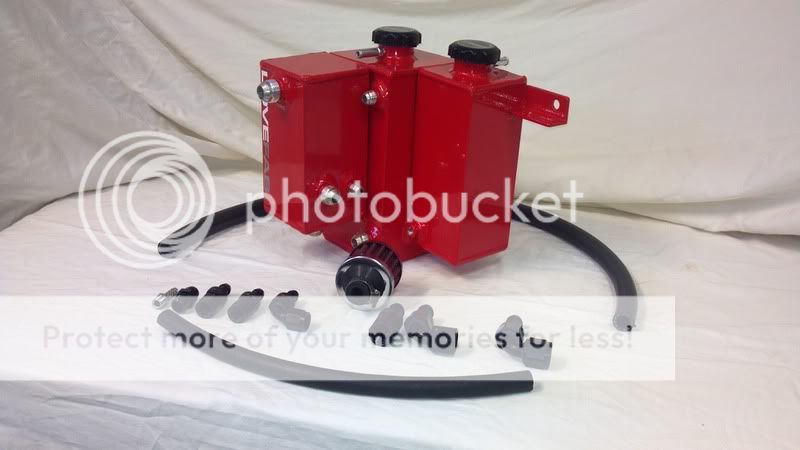
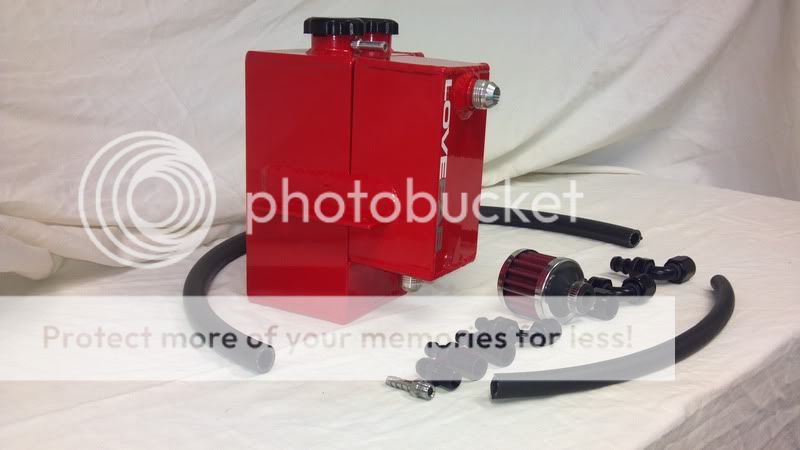
Comes with:
(2) 19psi Mishimoto Radiator Caps
(1) 1/8” pushlock fitting
(1) -6AN valve cover fitting(front valve cover)
(2) -6AN Straight pushlock fittings
(1) -6AN 90deg pushlock fitting
(1) -8AN Straight pushlock fitting
(1) -8AN 90 deg pushlock fitting
(1) -10AN 90 deg pushlock fitting
(1) -10AN female cap
(1) Breather filter
(1) coolant hose
(2) catch can hoses
Installed pictures:
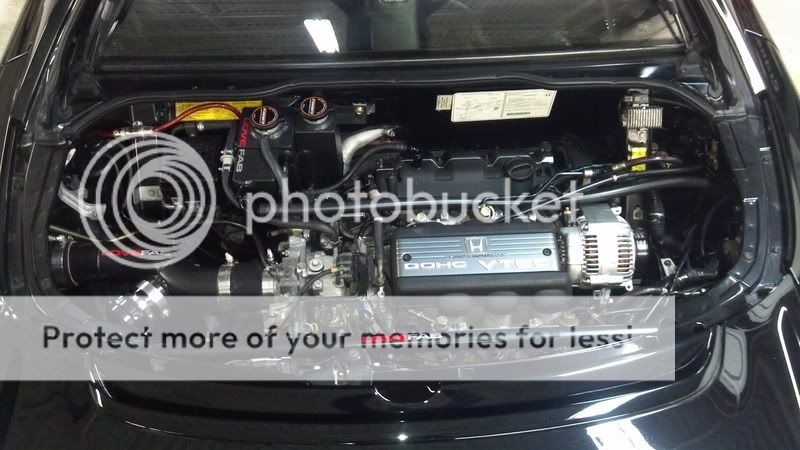
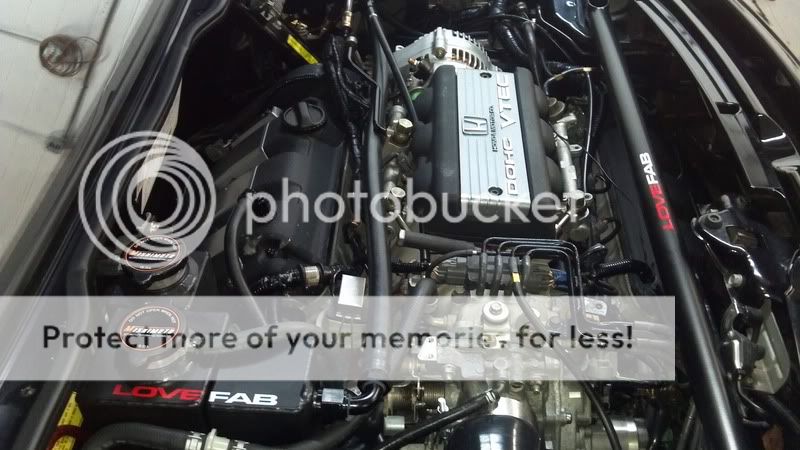
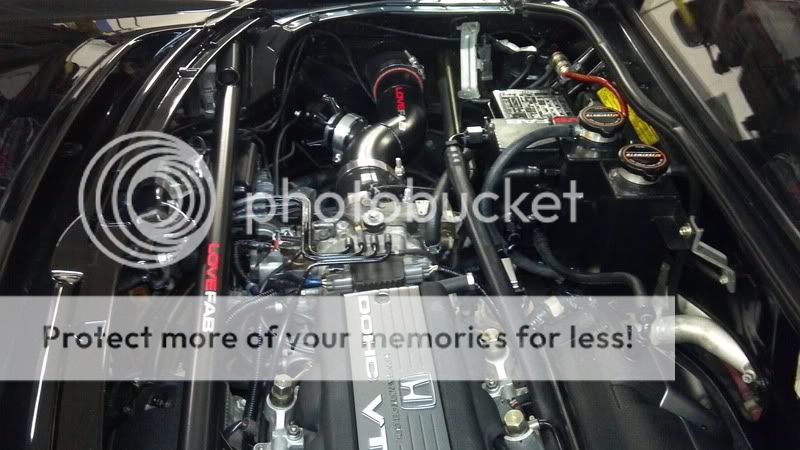
Signup list:
Chrisfast: Black Twin Chamber Tank, Paid, shipped
drzzz: Black Twin Chamber Tank with Catch Can *Installed
Nsoif: Black Twin Chamber Tank*Shipped
NSXInklL Black Twin Chamber Tank with Catch Can *ready to ship, NOT paid
kwinkler: Black Twin Chamber Tank Paid, *Paid, In powder coating now
SCA037: Black Twin Chamber Tank*In powder coating now, NOT paid
Wah: Black Twin Chamber Tank*Paid, In powder coating now
frascati: Black Twin Chamber Tank *Paid, In powder coating now[/B]
[x] Direct vendor group buy
Minimum Number of Units: 5 Complete sets to lock-in special pricing.
Maximum Number of Units: Unlimited
Closing Date: April 1st, 2013
Product Will Ship: [x] Product will ship in order of completion, in the order of payments received.
Payment Procedure: [x] Payment in full upon signing up
Payment Methods Accepted: Visa, MC, PayPal, Check/MO
Estimated Delivery Time / Date: 1-2 weeks for quantities above 20.
Product Pricing: See below.

Have you ever been to the track with your NSX, had it overheat, or even just warm up past optimal operating temperature? Have you also experienced the absolute mess of coolant spraying out of the factory swirl tank, usually combined with the horror of slippery coolant coating your rear tires in the middle of a high-G, high-speed corner? Chances are, if you’ve tracked your NSX, you have.
We have transformed a time-tested product into one neat package; the Twin Chamber Coolant Tank. We’ve used this design principle for seven years, including being proven on the 754WHP Pikes Peak NSX running 24psi of boost at 14,115FT, and have had zero messes since! In addition to keeping the coolant INSIDE of the coolant system, these tanks are extremely sturdy. Each tank is built from .125” wall aluminum square stock, with .125” thick end caps, which are meticulously TIG welded to form a sealed tank. The tanks are incredibly sturdy, because there are only two welds per tank. The welds themselves are in a relatively low stress zone, which prevents “flexing” of the weld, which has led to the demise of many aluminum tanks in the past. We are so confident of our tanks that we are offering a Lifetime Replacement Warranty against failure.
The NSX engine bay is fairly cramped as it is. The vast majority of our customers use some form of forced induction, and benefit from a catch can. Instead of trying to find a place for a catch can, or shoehorning a catch can directly above the front header (which is a fire hazard!), we have implemented a catch can into our Twin Chamber coolant tank. The installation takes just minutes, and the result is a very clean and natural looking presence within the engine bay. The catch can features a -10AN bung that can be capped off and used for a drain, or returned back to the oil pan if you would prefer not to hassle with draining catch cans.
Finally, we hate fussing with hoses and hose clamps. We decided to revolutionize the coolant tank market by making AN fittings standard on all of our tanks. The pushlock fittings included with each tank(and catch can) are a one-time-installation, with no clamps required. Maintenance becomes a breeze when you don’t have to stretch, pry, and more often than not, tear the coolant hoses off of their connections. Simply loosen the AN fitting, and twist it off with one hand.
We are offering these tanks to NSXPrimers in two colors, in two configurations.
Twin Chamber Coolant Tank in Red or Black: $349.99



Comes with:
(2) 19psi Mishimoto Radiator Caps
(1)1/8” pushlock fitting
(1)-6AN pushlock fitting
(1)-8AN pushlock fitting
(1) coolant hose
Twin Chamber Coolant tank with integrated Catch Can: $549.99



Comes with:
(2) 19psi Mishimoto Radiator Caps
(1) 1/8” pushlock fitting
(1) -6AN valve cover fitting(front valve cover)
(2) -6AN Straight pushlock fittings
(1) -6AN 90deg pushlock fitting
(1) -8AN Straight pushlock fitting
(1) -8AN 90 deg pushlock fitting
(1) -10AN 90 deg pushlock fitting
(1) -10AN female cap
(1) Breather filter
(1) coolant hose
(2) catch can hoses
Installed pictures:



Signup list:
Chrisfast: Black Twin Chamber Tank, Paid, shipped
drzzz: Black Twin Chamber Tank with Catch Can *Installed
Nsoif: Black Twin Chamber Tank*Shipped
NSXInklL Black Twin Chamber Tank with Catch Can *ready to ship, NOT paid
kwinkler: Black Twin Chamber Tank Paid, *Paid, In powder coating now
SCA037: Black Twin Chamber Tank*In powder coating now, NOT paid
Wah: Black Twin Chamber Tank*Paid, In powder coating now
frascati: Black Twin Chamber Tank *Paid, In powder coating now[/B]
Last edited:



